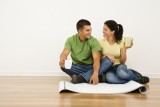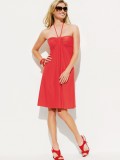Read this ebook for free! No credit card needed, absolutely nothing to pay.
Words: 2179 in 1 pages
This is an ebook sharing website. You can read the uploaded ebooks for free here. No credit cards needed, nothing to pay. If you want to own a digital copy of the ebook, or want to read offline with your favorite ebook-reader, then you can choose to buy and download the ebook.


: Lullaby-Land: Songs of Childhood by Field Eugene Grahame Kenneth Editor Robinson Charles Illustrator - Children's poetry American
CONTRIBUTIONS FROM
THE MUSEUM OF HISTORY AND TECHNOLOGY:
PAPER 23
THE INTRODUCTION OF SELF-REGISTERING
METEOROLOGICAL INSTRUMENTS
THE FIRST SELF-REGISTERING INSTRUMENTS 99
SELF-REGISTERING SYSTEMS 105
CONCLUSIONS 114
The flowering of science in the 17th century was accompanied by an efflorescence of instrument invention as luxurious as that of science itself. Although there were foreshadowing events, this flowering seems to have owed much to Galileo, whose interest in the measurement of natural phenomena is well known, and who is himself credited with the invention of the thermometer and the hydrostatic balance, both of which he devised in connection with experimentation on specific scientific problems. Many, if not most, of the other Italian instrument inventors of the early 17th century were his disciples. Benedetto Castelli, being interested in the effect of rainfall on the level of a lake, constructed a rain gauge about 1628. Santorio, well known as a pioneer in the quantification of animal physiology, is credited with observations, about 1626, that led to the development of the hygrometer.
Both of these contemporaries were interested in Galileo's most famous invention, the thermoscope--forerunner of the thermometer--which he developed about 1597 as a method of obtaining comparisons of temperature. The utility of the instrument was immediately recognized by physicists , and much ingenuity was expended on its perfection over a 50-year period, in northern Europe as well as in Italy. The conversion of this open, air-expansion thermoscope into the modern thermometer was accomplished by the Florentine Accademia del Cimento about 1660.
Galileo also inspired the barometer, through his speculations on the vacuum, which, in 1643, led his disciple Torricelli to experiments proving the limitation to nature's horror of a vacuum. Torricelli's apparatus, unlike Galileo's thermoscope, represented the barometer in essentially its classical form. In his earliest experiments, Torricelli observed that the air tended to become "thicker and thinner"; as a consequence, we find the barometer in use for meteorological observation as early as 1649.
The meetings of the Accademia terminated in 1667, but the 5-year-old Royal Society of London had already become as fruitful a source of new instruments, largely through the abilities of its demonstrator, Robert Hooke, whose task it was to entertain and instruct the members with experiments. In the course of devising these experiments Hooke became perhaps the most prolific instrument inventor of all time. He seems to have invented the first wind pressure gauge, as an aid to seamen, and he improved the bathometer, hygrometer, hydrometer, and barometer, as well as instruments not directly involved in measurement such as the vacuum pump and sea-water sampling devices. As in Florence, these instruments were immediately brought to bear on the observation of nature.
Free books android app tbrJar TBR JAR Read Free books online gutenberg
More posts by @FreeBooks


: The Great Push: An Episode of the Great War by MacGill Patrick - World War 1914-1918 Personal narratives British; World War 1914-1918 Campaigns France; Authors English 20th century Biography; MacGill Patrick 1890-1963; Soldiers Great Britain Biography; Gre


: The Memoirs of François René Vicomte de Chateaubriand sometime Ambassador to England Volume 4 (of 6) Mémoires d'outre-tombe volume 4 by Chateaubriand Fran Ois Ren Vicomte De Teixeira De Mattos Alexander Translator - Chateaubriand François-René vicomt




